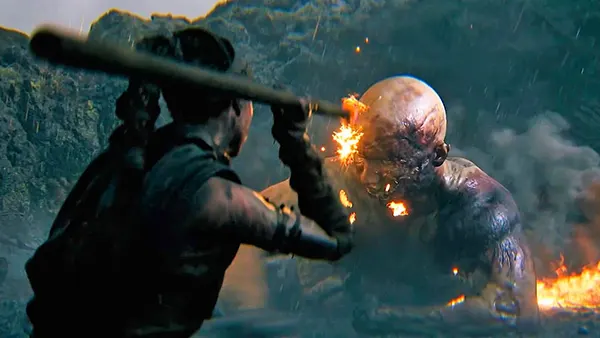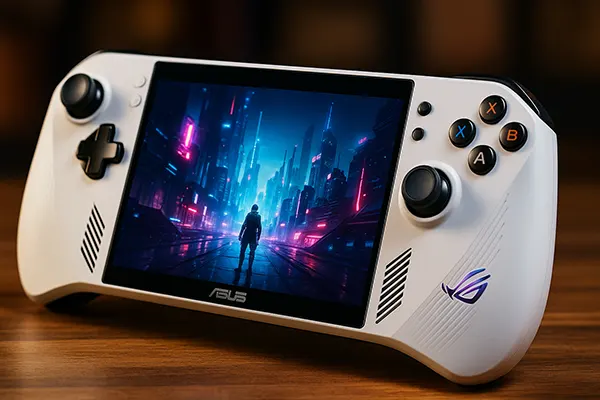
Senua’s Saga: Hellblade II – analysis of psycho-emotional depth and audio design
Senua’s Saga: Hellblade II, released in May 2024 by Ninja Theory, continues the haunting journey of the Celtic warrior Senua. This instalment builds on the themes of psychological struggle and auditory immersion that made the first game stand out, while expanding the scope of its narrative and technical achievements. The title has been praised for its authentic depiction of mental health, supported by detailed audio design that places players directly inside Senua’s fragile but resilient mind.
Psycho-emotional narrative and character development
Hellblade II delves deeply into Senua’s ongoing battles with psychosis, portraying not only the voices in her head but also the social and cultural pressures of her world. The narrative takes inspiration from Icelandic landscapes and Norse mythology, situating her personal struggles within a broader mythological conflict. Rather than reducing her condition to a gameplay gimmick, the developers treat it with respect and sensitivity.
The game’s writing team collaborated with neuroscientists, mental health experts, and individuals with lived experiences of psychosis. This ensures that the hallucinations and internal conflicts Senua faces are grounded in reality, giving players insight into how perception and reality can intertwine in complex ways. The authenticity is not just artistic but educational, creating awareness of mental health through interactive storytelling.
Senua herself grows as a character, evolving from a traumatised survivor into a determined leader who confronts both external threats and her own inner turmoil. This shift emphasises resilience and empathy, presenting her not only as a warrior but as a deeply human figure.
Impact on player perception
By weaving psychological vulnerability into gameplay, the title changes how players engage with the protagonist. Instead of feeling detached, the audience becomes emotionally invested in Senua’s survival and healing. This perspective is rare in gaming, where mental health is often either trivialised or ignored.
The emotional intensity is heightened by visual storytelling: facial capture technology brings subtle expressions to life, and environmental design mirrors Senua’s state of mind. Shifting landscapes, disorienting camera angles, and claustrophobic spaces echo her fears, ensuring that players feel the weight of her journey.
Ultimately, the story does not present psychosis as a weakness. Rather, it frames Senua’s experiences as a source of unique perspective and strength. This nuanced representation makes Hellblade II a significant cultural contribution beyond its identity as an action-adventure game.
Audio design and immersive soundscapes
The audio design is one of Hellblade II’s defining achievements. Using binaural recording techniques, the developers place voices and sounds around the player in three-dimensional space. This creates an unsettling but authentic experience that simulates how auditory hallucinations may occur in reality.
The voices, known as “Furies”, whisper, argue, taunt, and encourage Senua throughout her journey. Their unpredictability keeps players on edge, reinforcing the uncertainty of her condition. At times, they provide misleading guidance; at others, they act as an emotional chorus that amplifies her doubt or determination.
Environmental sound also plays a crucial role. From the crash of waves on Icelandic shores to the crackling of distant fires, every element is carefully layered to heighten immersion. The soundscape is never decorative: it reflects Senua’s mental state and situates players firmly within her lived experience.
The role of music and silence
David García’s musical score balances minimalism with intensity, shifting between haunting choral pieces and tense, percussive rhythms. Music punctuates emotional peaks, guiding the player through moments of despair, revelation, and catharsis.
Equally important is the deliberate use of silence. Moments without sound draw attention to Senua’s isolation, forcing players to confront her vulnerability. Silence also creates contrast, making sudden bursts of sound more impactful.
This dynamic range between sound and silence deepens the emotional connection between player and character. By blending music, environmental audio, and binaural voices, the game achieves an auditory design that is both technically advanced and emotionally resonant.

Cultural context and critical reception
Set against the dramatic landscapes of Iceland, the game integrates Norse mythology and cultural history with contemporary issues of trauma and healing. The authenticity of its locations, captured through photogrammetry, grounds the story in a tangible reality while maintaining a mythical atmosphere.
Critics in 2024 and 2025 praised Hellblade II for pushing the boundaries of narrative-driven games. The combination of cinematic visuals, psychological realism, and cutting-edge sound design distinguished it from mainstream titles. It is frequently cited as an example of how games can bridge entertainment with meaningful cultural dialogue.
The reception also highlighted its accessibility features, such as visual contrast adjustments and descriptive audio, ensuring that a wider audience could engage with its powerful themes. This inclusivity strengthens its role as both an artistic and socially responsible work.
Future influence on the industry
Hellblade II demonstrates how interactive media can sensitively explore mental health without sensationalism. Its success may encourage more developers to collaborate with experts and communities when addressing complex issues. By setting a new standard for authenticity, it broadens the scope of what video games can achieve.
In terms of audio design, its use of binaural techniques and dynamic soundscapes is already inspiring other studios to experiment with immersive auditory storytelling. This could reshape expectations of sound as a gameplay element rather than a background feature.
As gaming continues to evolve, titles like Hellblade II show that emotional depth and technical innovation can coexist. They point towards a future where interactive entertainment is also a platform for empathy, education, and cultural reflection.





